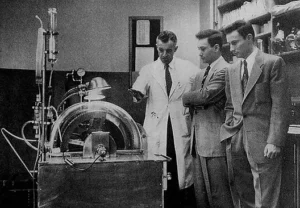The history of kidney transplantation is a remarkable journey of medical innovation, perseverance, and life-saving breakthroughs. The very first kidney transplant marked a turning point in the field of organ transplantation, offering hope for patients suffering from kidney failure. This groundbreaking procedure took place in the mid-20th century, changing the future of medicine and saving countless lives.
The First Kidney Transplant: A Milestone in 1954
The first successful kidney transplant in the world took place on December 23, 1954, at Peter Bent Brigham Hospital (now known as Brigham and Women’s Hospital) in Boston, Massachusetts, USA. The operation was carried out by a team led by Dr. Joseph Murray, a pioneering American surgeon who would go on to receive the Nobel Prize in Physiology or Medicine in 1990 for his contributions to organ transplantation.

The Patients: Identical Twins
One of the most remarkable aspects of the first kidney transplant was that the donor and recipient were identical twins: Ronald Herrick and Richard Herrick. This was crucial because it eliminated the risk of organ rejection, a major concern at the time due to the lack of immunosuppressive medications. Since identical twins have the same genetic makeup, their bodies were less likely to recognize the transplant as foreign, making the procedure much safer.
Ronald, the donor, gave one of his kidneys to his brother Richard, who had been suffering from end-stage kidney failure due to chronic glomerulonephritis, a condition that causes inflammation of the kidneys.
The Procedure: A Groundbreaking Moment
Dr. Murray’s team performed the transplant using the kidney from Ronald Herrick, placing it in his brother Richard’s abdomen. The procedure itself was complex and challenging, but thanks to the close genetic match and the skill of the medical team, the transplant was a success.
Following the operation, Richard Herrick’s kidney function gradually improved, and he was able to live a much healthier life. Although the procedure was groundbreaking, the transplanted kidney lasted for several years before eventually failing. However, this transplant set the foundation for future advances in organ transplantation, demonstrating that it was possible to transplant an organ from one person to another successfully.
Challenges Faced in Early Transplants
While the first kidney transplant was a success, it did not come without challenges. In the years that followed, doctors faced significant hurdles, including:
- Organ rejection: Even with identical twins, there was a risk of rejection, especially in transplants between non-identical donors and recipients.
- Immunosuppressive drugs: At the time of the first transplant, there were no effective immunosuppressive drugs to prevent organ rejection. It was only after the discovery of drugs like azathioprine in the late 1950s that organ rejection could be better controlled.
- Limited donor organs: The shortage of available organs has remained a challenge throughout the history of transplantation.
Despite these obstacles, the success of the first kidney transplant paved the way for the development of transplant techniques, the creation of immunosuppressive drugs, and the establishment of organ donation systems that we rely on today.
The Impact of the First Kidney Transplant
The successful transplant between Ronald and Richard Herrick marked the beginning of the modern era of organ transplantation. It demonstrated the potential for life-saving procedures and provided the scientific foundation for kidney transplants as well as the development of organ transplantation in general. This milestone led to the creation of transplant centers, the improvement of surgical techniques, and the expansion of organ donation programs worldwide.
Today, kidney transplants are among the most common organ transplants performed globally, with thousands of lives saved each year. The success of kidney transplantation has also inspired the development of organ transplants for the heart, liver, pancreas, and lungs, making a significant impact on the survival and quality of life for patients with organ failure.
Learn more about kidney health and kidney transplant as an hopeful option.
Legacy and Ongoing Advances
Dr. Joseph Murray’s pioneering work and the successful transplant of 1954 have left a lasting legacy in the field of medicine. Modern kidney transplants now involve advanced immunosuppressive therapies to reduce the risk of rejection and improve long-term outcomes. Additionally, kidney transplantations are increasingly being performed from living donors and deceased donors, with increasingly effective matching techniques.
Moreover, advancements in organ preservation, surgical methods, and post-transplant care continue to improve outcomes, making kidney transplantation a life-saving procedure with high success rates.
Final Thoughts
The first-ever kidney transplant was not just a medical achievement but a turning point in the history of medicine. It demonstrated the potential for saving lives and sparked a revolution in organ transplantation that continues to benefit millions of people worldwide. Thanks to the bravery of the Herrick brothers and the groundbreaking work of Dr. Joseph Murray, kidney transplantation is now a routine and life-saving procedure, offering hope to those battling kidney failure.
As we celebrate this historic achievement, we also recognize the ongoing need for organ donors and the importance of continued medical research to further improve transplant outcomes for patients around the world.
If you’re interested in learning more about kidney transplants or exploring your options, contact us for expert guidance and support. Your health and well-being are our top priority.
